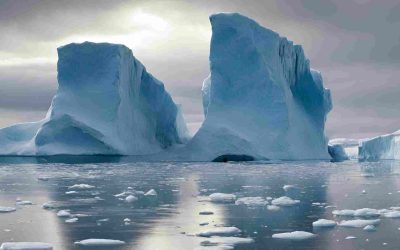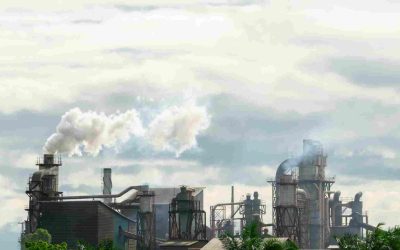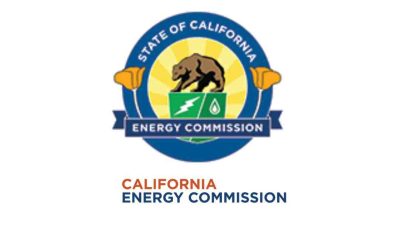Climate change refers to the long-term changes in the Earth’s climate, including variations in temperature, precipitation, and other weather patterns, that have occurred over the past few decades. The impact of climate change is widespread, affecting the environment, human health, and the economy. This blog will explore the effects of climate change and provide evidence-backed data to support the assertions.
Historical Observations:
One of the most visible effects of climate change is an increase in the frequency and intensity of natural disasters such as hurricanes. According to the Pew Center, the number of severe hurricanes has increased over the past few decades, coinciding with the post-industrial era and proving the influence of human activity on climate change. The impacts of hurricanes can be devastating, causing extensive damage to homes, businesses, and critical infrastructure like power grids and water treatment facilities. In addition, climate change is making hurricanes more intense and potentially more destructive, which can exacerbate these impacts.

The frequency of North Atlantic Tropical Storms has spiked recently.
Similarly, forest fires have become more frequent and intense in recent years, especially in the western United States, as temperatures have risen and precipitation patterns have changed. The impacts of forest fires are far-reaching, with potential effects on ecosystems, air quality, and human health. For example, wildfires can release large amounts of smoke and particulate matter into the air, which can exacerbate respiratory issues and cause other health problems.

Melting glaciers are another consequence of climate change. As temperatures rise, glaciers around the world have been retreating at an unprecedented rate, leading to a loss of freshwater resources and a rise in sea levels. The Environmental Protection Agency (EPA) reports that Arctic glaciers have lost an average of 279 billion metric tons of ice per year between 1993 and 2018. This loss of ice can have far-reaching effects, including impacts on global ocean circulation patterns and sea level rise.

Cumulative mass from glaciers has been steadily decreasing over time

The McCall Glacier in 1958 vs 2003
Climate change has also had a significant impact on the acidity of the ocean. As the concentration of carbon dioxide in the atmosphere has increased, the oceans have absorbed a significant amount of this carbon, leading to a rise in ocean acidity. The EPA reports that ocean acidity has increased by approximately 30% since the beginning of the Industrial Revolution. This increase in acidity can have serious impacts on marine ecosystems, including effects on the growth and survival of some species of shellfish and other marine organisms.

pH has been decreasing (acidity has been increasing) in the ocean over time
Forecast:
Climate change has also led to changes in precipitation patterns, causing some areas to become wetter and others drier. According to climate modeling, this trend is expected to continue through the end of the century, with wet areas getting wetter and dry areas getting drier. This has significant implications for water resources and agricultural production, which rely heavily on predictable precipitation patterns.

Predicted Precipitation Change from 2090 to 2100
Rising sea levels are one of the most serious consequences of climate change, as they pose a significant threat to coastal cities and communities. The EPA reports that sea levels have risen by approximately 8 inches since 1880 and are projected to continue rising at an accelerating rate. This rise in sea level is primarily due to the melting of glaciers and ice caps, which contributes to the volume of water in the ocean. As sea levels rise, they can cause flooding, erosion, and other damages to coastal infrastructure and communities.

Cumulative Sea Level Change vs Year
While it is clear that climate change poses a significant threat to the environment, its impact is not limited to the natural world. Climate change also has serious implications for human health and the economy. For instance, extreme weather events like hurricanes and floods can cause property damage, displacement of communities, and the spread of disease. Moreover, changes in precipitation patterns and rising sea levels can lead to water scarcity and food insecurity, which can destabilize economies and trigger social unrest.
According to a study by the International Monetary Fund (IMF), climate change has the potential to significantly reduce global economic growth over the next few decades, with the poorest countries being the most vulnerable to its effects. This is due to factors such as decreased agricultural productivity, increased healthcare costs, and a decline in tourism revenue. Moreover, climate change can exacerbate inequality, as marginalized communities are often the most vulnerable to its effects and have the least access to resources to adapt.

Real GDP Per Capita vs Temperature
All of this evidence has led to a strong scientific consensus on the human-caused nature of climate change. According to multiple studies, including a survey of over 12,000 peer-reviewed scientific articles, more than 99% of climate scientists agree that human activity is the primary cause of climate change. This consensus is a critical factor in understanding the urgency of addressing climate change and developing effective solutions. As a society, we must acknowledge and act upon this consensus to mitigate the effects of climate change and protect our planet for future generations.
In light of these challenges, it is critical that we take action to address climate change. This includes reducing greenhouse gas emissions through measures like transitioning to renewable energy sources and promoting sustainable agriculture and transportation. It also involves adapting to the impacts of climate change that are already occurring, such as implementing measures to protect vulnerable communities and ecosystems from extreme weather events and sea level rise.
In conclusion, the effects of climate change are numerous and far-reaching, affecting not only the environment but also human health and the economy. While the challenges are daunting, there is also reason for hope. By taking collective action to address climate change, we can protect our planet and secure a more sustainable and equitable future for all.
Sources:
EconStor (2023). Assessing the Economic Costs of Natural Disasters. Retrieved from https://www.econstor.eu/bitstream/10419/96330/1/776928422.pdf
Environmental Protection Agency. (n.d.). Climate Change Indicators: Sea Level. Retrieved from https://www.epa.gov/climate-indicators/climate-change-indicators-sea-level
Environmental Protection Agency (2023). Climate Change Indicators: Ocean Acidity. Retrieved from https://www.epa.gov/climate-indicators/climate-change-indicators-ocean-acidity
International Monetary Fund (2o23). Climate and the Economy. Retrieved from https://www.imf.org/en/Topics/climate-change/climate-and-the-economy#
IOPscience (2023). Global glacier retreat and associated future runoff from Asia. Environmental Research Letters, 16(8). doi: 10.1088/1748-9326/ac296
NASA (2023). Six Trends to Know About Fire Season in the Western U.S. Retrieved from https://climate.nasa.gov/ask-nasa-climate/2830/six-trends-to-know-about-fire-season-in-the-western-us/
Environmental Protection Agency (2023). Climate Change Indicators: Arctic Glaciers. Retrieved from https://www.epa.gov/climate-indicators/climate-change-indicators-arctic-glaciers






